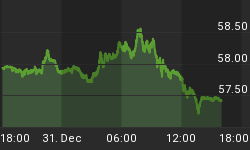Global mined copper output dropped in the first six months of the year by 1.4% to nearly 9.92 million tonnes, mainly due to weather disruptions in the world’s top producer, Chile, and the transition of two mines in Indonesia to different ore zones.
Chile’s production dropped 2.5% as heavy rains in the country’s north and lower grades weigh on the country’s outcome, the latest report by the International Copper Study Group (ICSG) shows.
Indonesia’s copper concentrate output fell by a staggering 55% owing to the transition of Grasberg into block caving and the Batu Hijau mine to Phase 7.
This means that global refined copper market ended the first half of 2019 with a supply deficit of about 220,000 tonnes.
Factoring in changes to unreported, bonded stocks in China, the deficit likely totaled 190,000 tonnes, the industry group said.
Analysts, such as Colin Hamilton at BMO Capital Markets, believe overall output may have fallen further, as the ICSG still has Chinese mined copper output rising. Related: Why Is Iceland The Focus of Washington’s New Trade Strategy?
“On our estimates, and balancing for stronger concentrate imports and spot treatment charges, we believe it may well have fallen,” Hamilton wrote in a note to investors. “We reiterate that, with supply holding up its end of the bargain, the copper market is in deficit this year. However, deficits don’t matter for pricing without improved demand.”
In early September, copper prices fell to their lowest level since mid-2017 due mainly to the ongoing trade spat between the US and China, the world’s biggest consumer of the red metal.
On a regional basis, ICSG data shows that mine production declined 6% in Asia, 1% in Latin America and 3% in Europe, but increased around 2% in North America and 7% in Oceania, and remained essentially flat in Africa.
By Mining.com
More Top Reads From Safehaven.com:

















